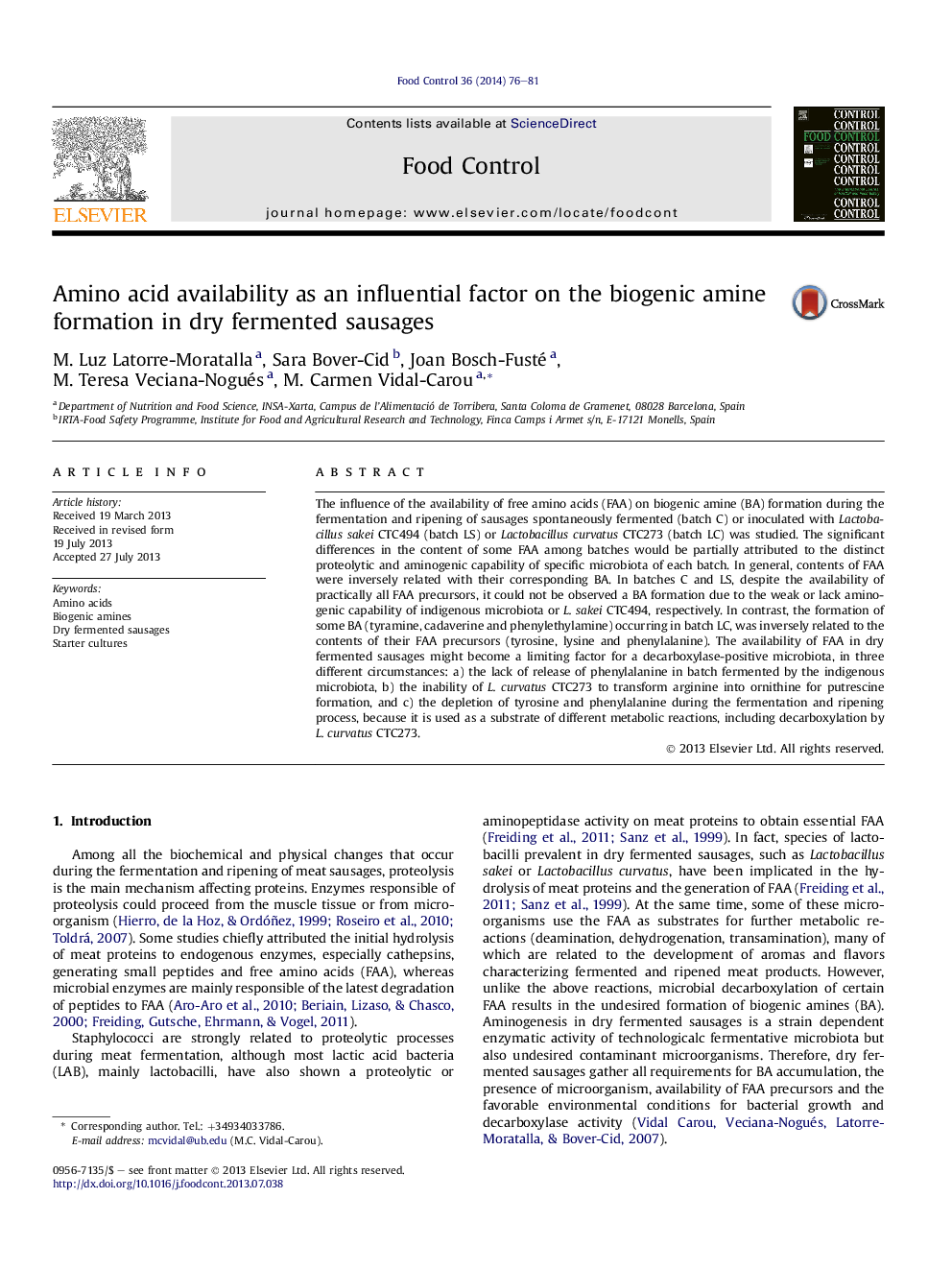| کد مقاله | کد نشریه | سال انتشار | مقاله انگلیسی | نسخه تمام متن |
|---|---|---|---|---|
| 6392103 | 1330436 | 2014 | 6 صفحه PDF | دانلود رایگان |
- Biogenic amine formation has been studied in relation to the availability of free amino acid precursors.
- Free amino acid depletion during the fermentation could act as a limiting factor for additional biogenic amine formation.
- The inability of L. curvatus CTC273 to transform arginine into ornithine becomes a limiting factor for putrescine formation.
The influence of the availability of free amino acids (FAA) on biogenic amine (BA) formation during the fermentation and ripening of sausages spontaneously fermented (batch C) or inoculated with Lactobacillus sakei CTC494 (batch LS) or Lactobacillus curvatus CTC273 (batch LC) was studied. The significant differences in the content of some FAA among batches would be partially attributed to the distinct proteolytic and aminogenic capability of specific microbiota of each batch. In general, contents of FAA were inversely related with their corresponding BA. In batches C and LS, despite the availability of practically all FAA precursors, it could not be observed a BA formation due to the weak or lack aminogenic capability of indigenous microbiota or L. sakei CTC494, respectively. In contrast, the formation of some BA (tyramine, cadaverine and phenylethylamine) occurring in batch LC, was inversely related to the contents of their FAA precursors (tyrosine, lysine and phenylalanine). The availability of FAA in dry fermented sausages might become a limiting factor for a decarboxylase-positive microbiota, in three different circumstances: a) the lack of release of phenylalanine in batch fermented by the indigenous microbiota, b) the inability of L. curvatus CTC273 to transform arginine into ornithine for putrescine formation, and c) the depletion of tyrosine and phenylalanine during the fermentation and ripening process, because it is used as a substrate of different metabolic reactions, including decarboxylation by L. curvatus CTC273.
Journal: Food Control - Volume 36, Issue 1, February 2014, Pages 76-81
